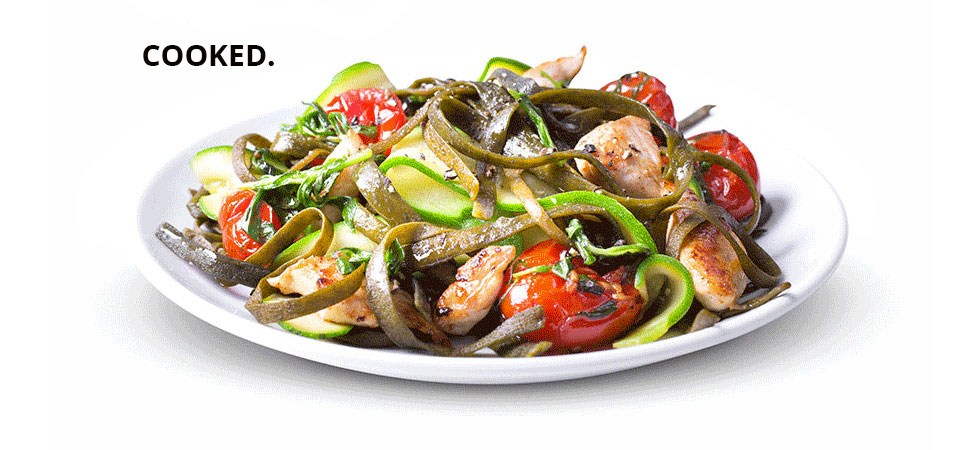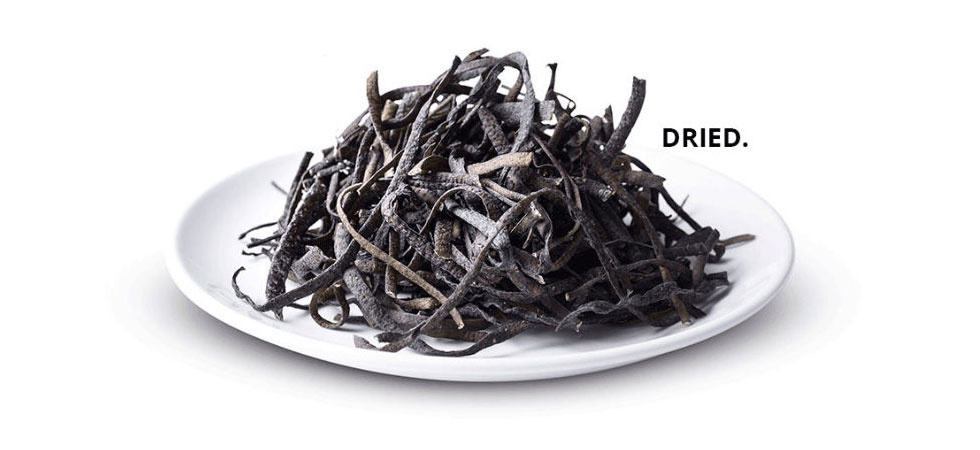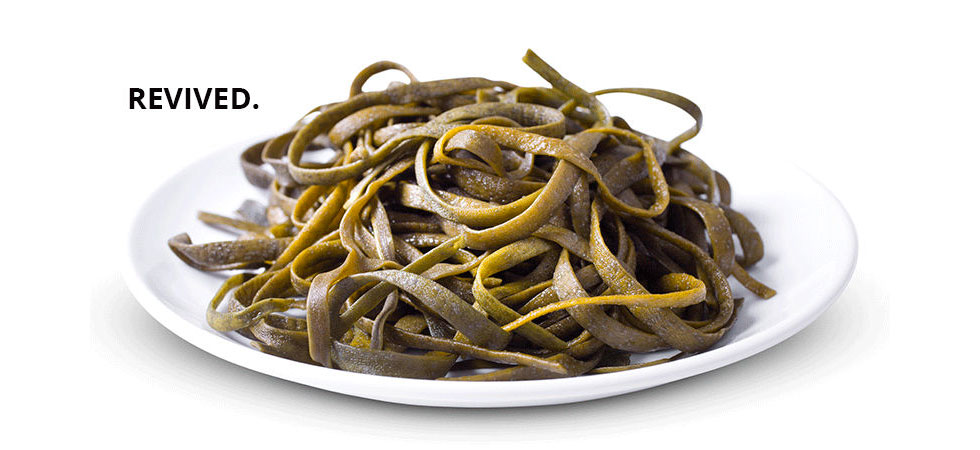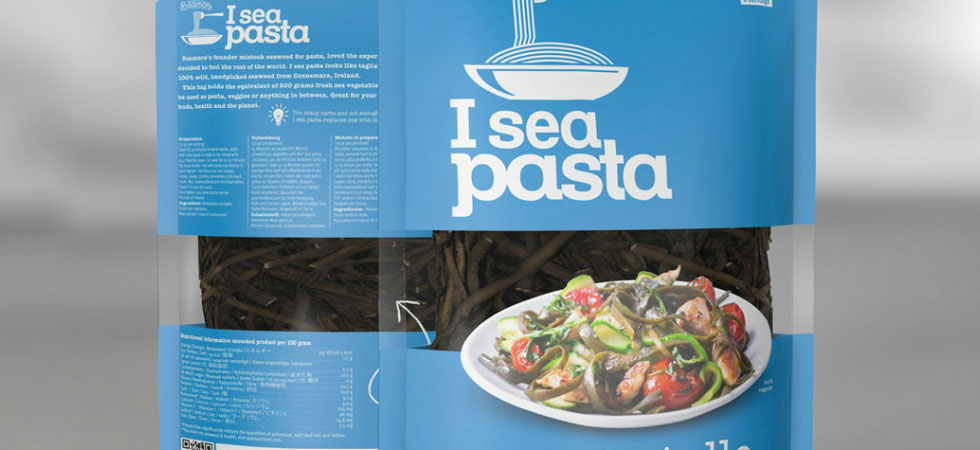Seamore food
The right stuff
Can a new food product save the earth? The Dutch Seamore company believes I See Pasta might do just that. The strings are good for both consumers and the environment. Small children and hip foodies are crazy about the darkly coloured pasta – and for the time being there’s more than enough of the stuff growing below sea level to feed masses of people.

I See Pasta appeals to people who like to eat healthy, light and carbohydrate-free food, but also are fond of a firm bite and used to having pasta.
Yes, the name Himanthalia has an almost heavenly ring to it. But in fact, the seaweed – for that’s what it is – looks just like ordinary tagliatelle. When Dutchman Willem Sodderland ordered a ‘seaweed salad’ in a trendy restaurant on the island of Ibiza, he was disappointed at first: what he saw on his plate was not seaweed, but pasta. The chef of the restaurant made him change his mind. Sodderland turned the strings around his fork, took a bite and was converted. Because the seaweed tasted great, but also because he suddenly had this fantastic idea: this stuff not only had a wonderful taste, it also looked exactly like pasta and might very well be much healthier and more sustainable than spaghetti!

Seaweed Bolognaise
The family took their holiday in November 2013 and discovering Himanthalia sparked a revolution in Sodderland’s life. After this dinner he did some research and began to experiment with the seaweed. He subjected his wife and small children to a blind test. After three attempts he succeeded in getting the ‘tagliatelle’ Bolognaise just right – the children were crazy about it (and still are). Meanwhile he had learned that Himanthalia was organic, gluten-free, low in calories and without carbohydrates. What’s more,it contained anti- anti-oxidants, fibres and the healthy Omega3, which oily fish are famous for. The Dutch marketeer Sodderland felt it was something that would make everybody happy – omnivores, vegetarians and vegans. Moreover, the seaweed was harvested from the rocks on the coast of Ireland once a year, without any manufacturing processing. The preparation too proved to be simple: soak and/or cook, ready for consumption. Sodderland’s love of healthy food combined perfectly with his instinct for marketing and commerce: in 2050 the earth will have to feed some nine billion people, what could be more wonderful that contributing to this with something that does not require pesticides, cutting down trees or artificial manuring?

The fishermen of Connemara
Willem travelled to the Irish coast for the first time in December 2014. What he found in Connemara fitted perfectly in his plans. Himanthalia had been harvested there for centuries (it apparently had been growing in the area for some 2.4 million years), and even though officially nobody had any rights on the rocks in the sea, acquired rights certainly played a role. The fishermen had been in the habit of only taking home what they needed for their personal use.
Business with the Irish was quickly settled: if they sold part of their catch to Willem’s newly founded company Seamore, the fishermen could be sure of a long-term, profitable relationship with the Dutch start-up. It was a bit of a gamble, of course, but Sodderland firmly believed in his plan– for the foreseeable future, enough seaweed would be growing in Irish Connemara to provide enough of it for everybody. If only a maximum of some fifteen percent of the total was harvested every year, the survival of the plant and its environment would not be threatened in any way.
Crowd-funding
For January 2015 the Dutchman placed an order of seven thousand kilos. Once back home, he faced a hectic few months. Test panels tasted and Seamore staff developed suitable recipes. Within two months, a crowd-funding action had produced enough funds for an extensive public campaign reaching various kinds of chefs far beyond the borders. And in August 2015, the first blue I See Pasta boxes could be found on supermarket shelves. In the ‘health department’ of one, with the pastas in another – and both supermarket chains were right in this case.
No sushi
It probably was a very clever move that the founder of Seamore did not sell the Himanthalia strings as seaweed but as an alternative for pasta. Foodies often associate seaweed with Japanese nori or sushi, a completely different kind of water plant with a totally different taste.
I See Pasta appeals to people who like to eat healthy, light and carbohydrate-free food, but also are fond of a bite and used to having pasta.
Even those who don’t like fish or shellfish appreciate the relatively neutral taste of this seaweed. According to the recipe developers of Seamore, the stuff is quite versatile: it can be combined with squid and with chocolate, and blends just as well with a good curry as with a refined amuse.
Was Marco Polo the first person to bring rice to Italy? Well, if he was, Willem Sodderland has a good idea of how he must have felt.



